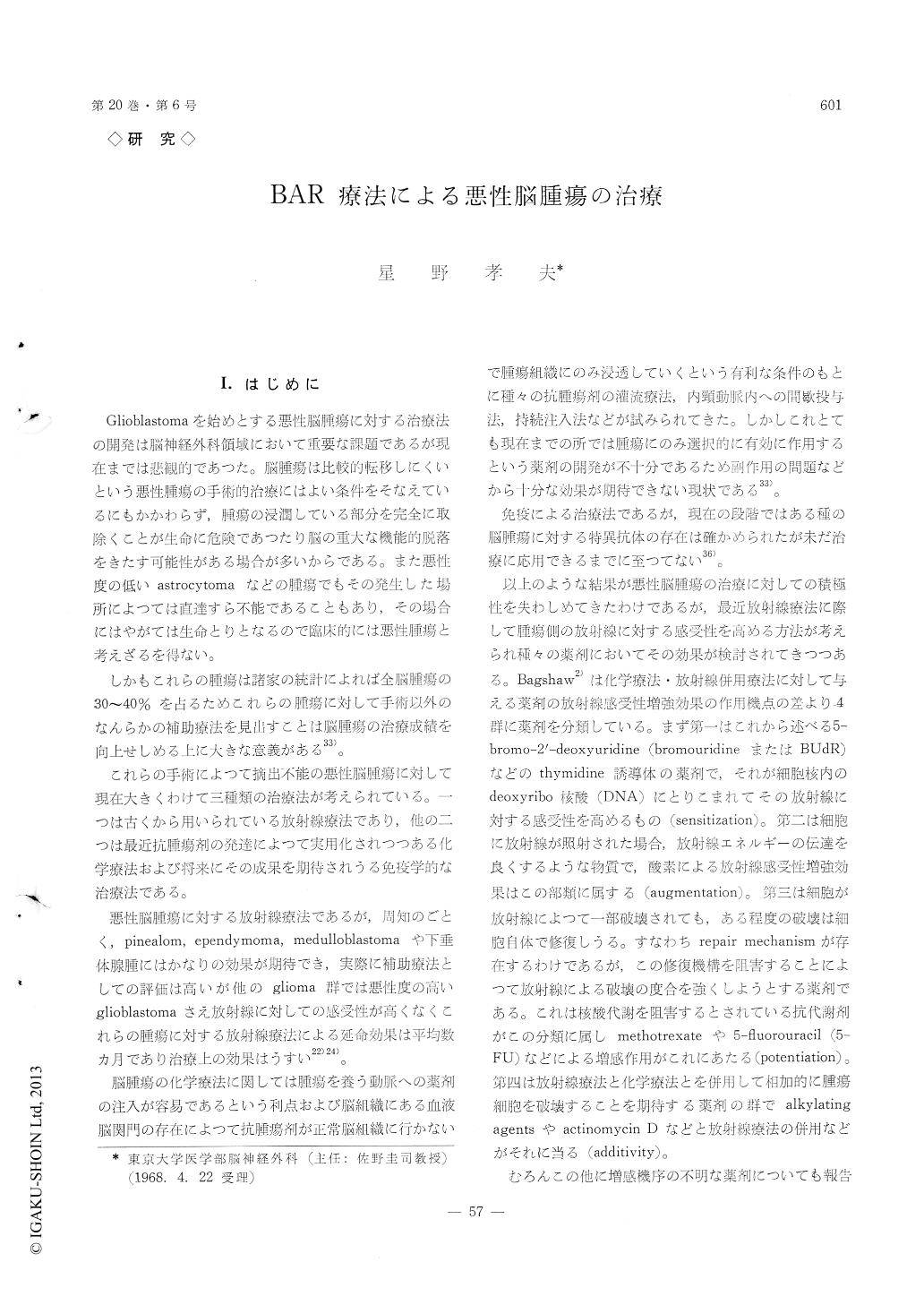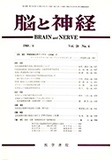Japanese
English
- 有料閲覧
- Abstract 文献概要
- 1ページ目 Look Inside
I.はじめに
Glioblastomaを始めとする悪性脳腫瘍に対する治療法の開発は脳神経外科領域において重要な課題であるが現在までは悲観的であつた。脳腫瘍は比較的転移しにくいという悪性腫瘍の手術的治療にはよい条件をそなえているにもかかわらず,腫瘍の浸潤している部分を完全に取除くことが生命に危険であつたり脳の重大な機能的脱落をきたす可能性がある場合が多いからである。また悪性度の低いastrocytomaなどの腫瘍でもその発生した場所によつては直達すら不能であることもあり,その場合にはやがては生命とりとなるので臨床的には悪性腫瘍と考えざるを得ない。
しかもこれらの腫瘍は諸家の統計によれば全脳腫瘍の30〜40%を占るためこれらの腫瘍に対して手術以外のなんらかの補助療法を見出すことは脳腫瘍の治療成績を向上せしめる上に大きな意義がある33)。
The agent 5-bromo-2'-deoxyuridine (bromouridine or BUdR), which is known to sensitize bacterial or tumor cells to irradiation, could be incorporated into the nuclei of human brain tumor cells cultured by the trypsinization-monolayer method. The BUdR had neither antimetabolic nor cytocidal effect but did increase the radiosensitivity of the cells that took it up. The uptake of BUdR into the tumor cell nuclei in tissue culture was enhanced by addition of a small amount of antimetabolites such as Metho-trexate, 5-FU or FUdR. This fact may be explained by the hypothesis that the antimetabolites inhibited the biosynthesis of thymidine and thus forced divid-ing cells to incorporate the newly arrived thymidine analogue (BUdR) to duplicate their DNA.
Based on these facts, the authors have performed BUdR-Antimetabolite-continuous intra-arterial infu-sion-Radiation therapy (BAR therapy) for malignant brain tumors. The principle of the therapy included administration of BUdR, 600-1000 mg/day with a small amount of antimetabolites (1 to 5 mg of Meth-otrexate or 3 to 5 mg of 5-FU) by means of con-tinuous intra-arterial infusion for a period longer than the estimated generation time of the brain tumor cells (4-7 weeks) and combined irradiation. The au-thors applied this therapy to 42 cases of brain tumors, with excellent results. The cases of the tumors were summarized in Table 1 and the follow-up study of them were shown in Table 2. More than 85% of patients after the therapy are spending useful life and 60% have returned to their previous occupations. The side effects of BUdR have not been significant except the onychomadesis of finger nails. The au-thors belived this therapy is promising in the treat-ment of malignant brain tumors, although final evaluation will need long-term follow-up.

Copyright © 1968, Igaku-Shoin Ltd. All rights reserved.


